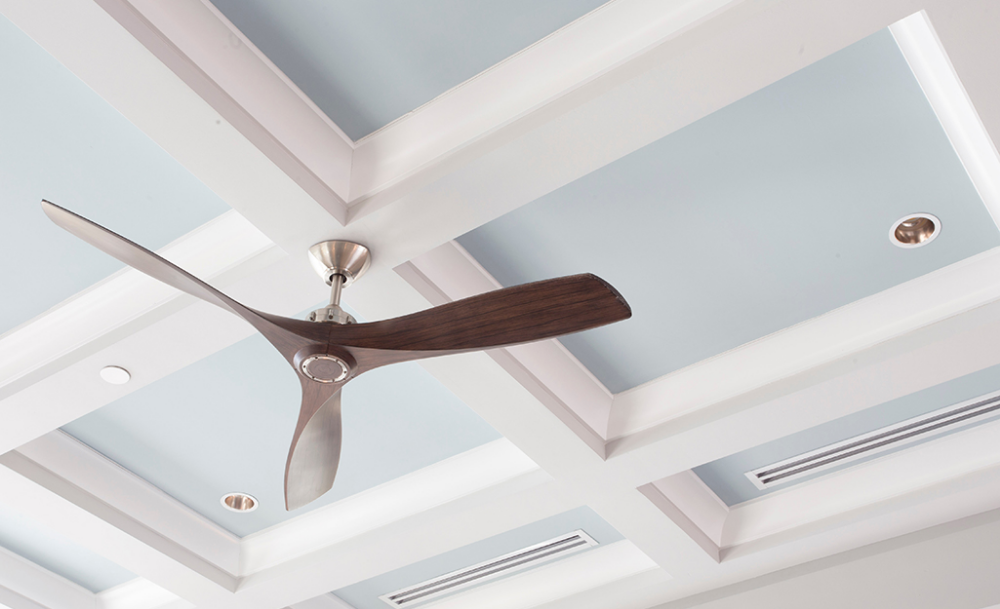In your home, condensation and moisture buildup can cause a variety of concerns. This may include major issues such as wood decay, the formation of mold, and even health problems for you and your family.
Ceiling fans can be quite useful in controlling moisture levels and preventing condensation, despite the fact that many people only consider them to be cooling devices.
In this blog post, we’ll understand some of the important ways in which ceiling fans can lessen moisture accumulation and condensation in your house. We will also offer some tips on how to get the most out of them. Let’s get started!
Understanding Condensation and Moisture Buildup
Before we dive into how ceiling fans can help mitigate condensation, let’s first understand what causes it. Condensation occurs when warm, moist air comes into contact with a cold surface, causing the air to release its moisture in the form of water droplets. This commonly happens on windows, walls, and other surfaces during colder months when indoor and outdoor temperature differentials are high.
Moisture buildup can also occur in areas of high humidity, such as bathrooms, kitchens, and basements. Without proper ventilation and airflow, moisture can accumulate on surfaces, leading to mold growth and structural damage over time.
How Ceiling Fans Can Help
Ceiling fans can help reduce condensation and moisture buildup in several ways:
1. Improved Air Circulation: One of the primary functions of ceiling fans is to circulate air within a room. By continuously moving air around, ceiling fans can help distribute heat more evenly, preventing cold spots where condensation is likely to form. Additionally, circulating air helps moisture evaporate more quickly, reducing the likelihood of buildup on surfaces.
2. Enhanced Ventilation: Ceiling fans can complement existing ventilation systems by promoting airflow throughout your home. In areas prone to moisture buildup, such as bathrooms and kitchens, running a ceiling fan while showering or cooking can help exhaust humid air and prevent it from lingering and causing condensation.
3. Temperature Regulation: In colder months, running ceiling fans in reverse (clockwise) at a low speed can help push warm air down from the ceiling towards the floor, preventing it from accumulating near windows and other cold surfaces where condensation is likely to occur.
4. Year-Round Usage: While ceiling fans are often associated with cooling during warmer months, they can be just as useful in colder months for managing moisture levels. By running ceiling fans at a low speed year-round, you can maintain consistent airflow and prevent stagnant air pockets where moisture can accumulate.
Importance Of Regular Maintenance & Repair
After ceiling fans installation Colorado Springs, it becomes important that you consider regular maintenance and repair. It is essential for various reasons. Firstly, it ensures optimal performance and efficiency, helping to reduce energy consumption and lower utility bills. Over time, dust and debris can accumulate on fan blades and motor components, causing the fan to operate less efficiently and potentially leading to increased wear and tear. By cleaning and lubricating moving parts and tightening loose connections, regular maintenance can extend the lifespan of your ceiling fan and prevent costly repairs or replacements down the line.
Additionally, regular maintenance can help identify and address any potential safety hazards. Loose screws or wiring issues can pose a fire risk if left unchecked, while wobbly fan blades can become dislodged and cause injury or property damage. By inspecting and repairing your ceiling fan on a regular basis, you can ensure that it operates safely and reliably.
Overall, investing time and effort into regular maintenance and repair of your ceiling fan is a small price to pay for the comfort, energy savings, and safety it provides.
Tips for Maximizing Effectiveness
To maximize the effectiveness of your ceiling fans in reducing condensation and moisture buildup, consider the following tips:
1. Use Fans in Conjunction with Other Ventilation Methods: While ceiling fans can help mitigate condensation, they are most effective when used in conjunction with other ventilation methods such as exhaust fans, opening windows, and using dehumidifiers in particularly humid areas.
2. Keep Fans Clean and Well-Maintained: Regularly clean and maintain your ceiling fans to ensure optimal performance. Dust and debris can accumulate on fan blades and hinder airflow, reducing their effectiveness in circulating air and preventing condensation.
3. Adjust Fan Speed and Direction: Experiment with different fan speeds and directions to find the optimal setting for reducing condensation in your home. In colder months, run fans in reverse at a low speed to circulate warm air downwards, and in warmer months, run fans in the forward direction at higher speeds to create a cooling breeze.
4. Consider Installing Ceiling Fans in Key Areas: Install ceiling fans in areas prone to moisture buildup, such as bathrooms, kitchens, and laundry rooms, to promote airflow and ventilation where it’s needed most.
Conclusion
No doubt ceiling fans are very important and versatile tools. They offer us lots of benefits and managing moisture levels and creating a healthier living environment for you and your family are among the most important ones.




